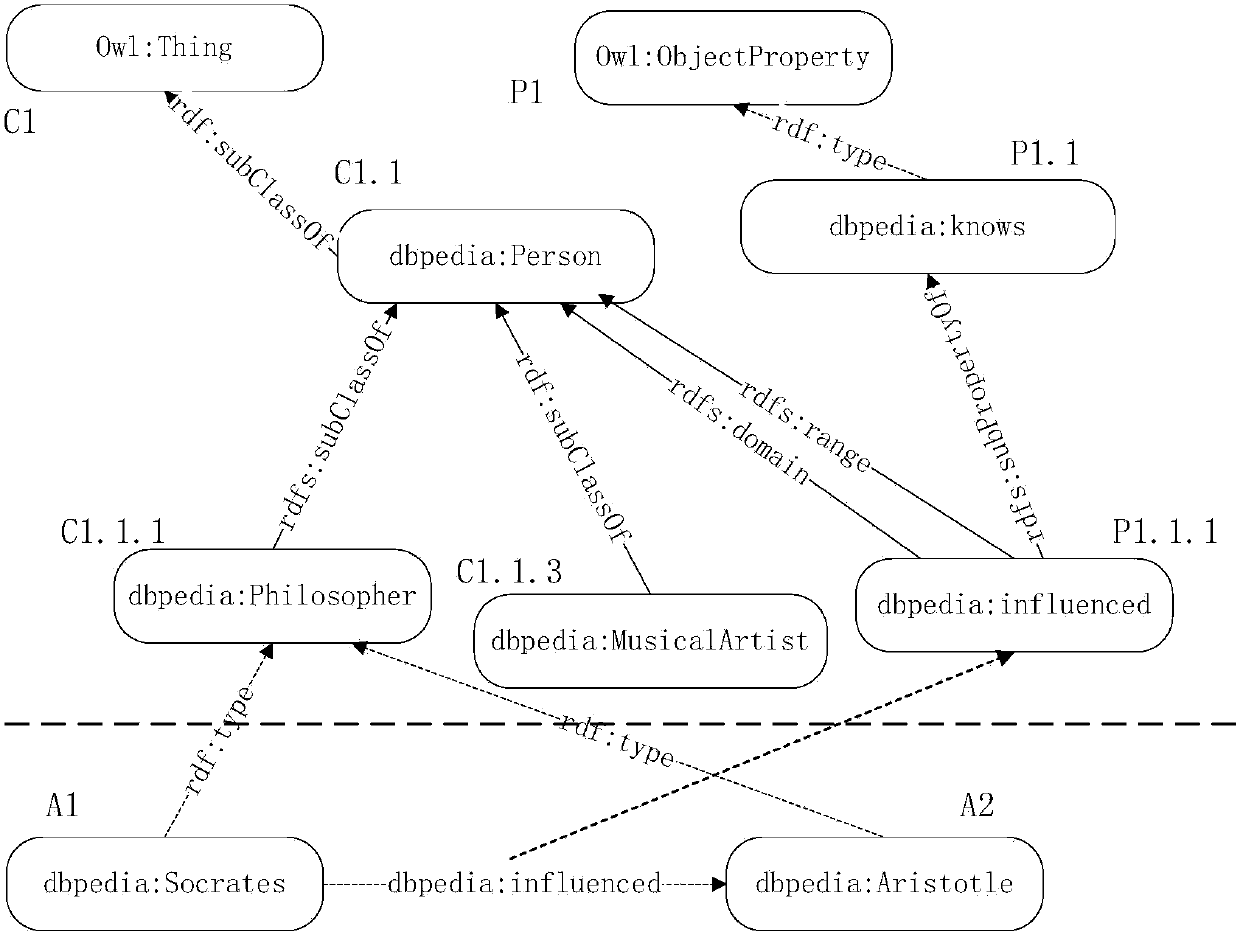Method for establishing high-efficient semantic indexing for large-amount RDF (resource description framework) data
A construction method and large-scale technology, applied in the field of RDF database, to achieve the effect of ensuring query efficiency and enriching offline reasoning
- Summary
- Abstract
- Description
- Claims
- Application Information
AI Technical Summary
Problems solved by technology
Method used
Image
Examples
Embodiment Construction
[0025] The present invention will be described in further detail below in conjunction with the accompanying drawings.
[0026] Step 1. Configure Bigdata, an open source distributed RDF database, as a persistent database for storing RDF data;
[0027] Step 2, distinguishing TBox data and ABox data in the RDF database, so as to facilitate encoding to create semantic indexes;
[0028] Step 3. According to the ORDPath encoding rule, encode the child-parent relationship of the Class in the TBox data, reflecting the child-parent semantic relationship between classes;
[0029] Step 4. According to the ORDPath encoding rule, the child-parent relationship of the Property in the TBox data is encoded to reflect the child-parent semantic relationship between attributes;
[0030] Step 5. According to the ORDPath encoding rule, encode the domain of each Property; since in the RDF data, the domain of a Property is all Class, so the encoding for the domain is directly used for the encoding f...
PUM
 Login to View More
Login to View More Abstract
Description
Claims
Application Information
 Login to View More
Login to View More - R&D
- Intellectual Property
- Life Sciences
- Materials
- Tech Scout
- Unparalleled Data Quality
- Higher Quality Content
- 60% Fewer Hallucinations
Browse by: Latest US Patents, China's latest patents, Technical Efficacy Thesaurus, Application Domain, Technology Topic, Popular Technical Reports.
© 2025 PatSnap. All rights reserved.Legal|Privacy policy|Modern Slavery Act Transparency Statement|Sitemap|About US| Contact US: help@patsnap.com



